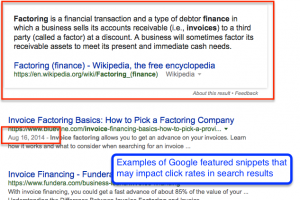— April 6, 2018

Shutterstock
Strong leaders have an enormous impact on the success of an organization. In fact, according to data from CEB Global, teams with enterprise leaders are 68% more innovative, 35% more engaged, 21% more adaptable, and have 20% better customer satisfaction than teams with weaker leadership. Other research shows that companies with top-tier leadership outperform others by 19% overall.
Unfortunately, many organizations struggle to find and promote effective leaders within their organizations. Surveys of HR professionals conducted by OnPoint show that many do not believe their organizations have the ability to reliably identify and develop employees with a high potential for leadership.
This assertion is backed up by other research from Gallup, which states that “Companies fail to choose the candidate with the right talent for the job 82% of the time” and that “only one in 10 people possess high talent to manage.”
The lack of high-potential employees and the frequent misidentification of leadership candidates contributes to enormous amounts of wasted time, money, and effort developing people who are not a good fit for the role. This, in turn, leads to more wasted time, money, and effort fixing the problems —such as increased employee turnover, reduced productivity/engagement, and the need to find suitable replacements.
With these issues in mind, how can your business improve its approach to identifying and developing future leaders in the here and now?
Best Practices for Identifying Tomorrow’s Leaders, Today
If only one in ten people have the right combination of talent and aptitude to be effective leaders, how can your organization make sure that it’s identifying the right people to develop? There are several components to creating a robust and reliable process for identifying high-potential leaders in your organization, including:
- Developing a Success Profile for Each Position. What does success look like for a given role in your organization? Creating a comprehensive profile of the skills and behaviors that contribute to success in a given position—based on input from both stakeholders and employees—can help you identify high-potential employees who possess those characteristics.
- Conduct Behavioral Interviews. Conducting interviews with candidates helps you assess what they’ve done and how they did it. They also allow you to determine how self-aware the candidate is by comparing their self-assessment to the assessments of those around them.
- Collect 360 Feedback. Gather feedback about leadership candidates from stakeholders, supervisors, and other employees to assess the candidate’s strengths and weaknesses as perceived by others.
- Administer Leadership Questionnaires. These questionnaires allow you to measure the key characteristics, preferences, and motivations of leadership candidates in an objective, data-driven manner. They’re particularly useful for identifying potential warning signs of a poor-fit candidate.
- Have Candidates Participate in Simulations. Live simulations of real-world challenges and situations that leaders face help you assess a candidate’s judgment and adaptability in a controlled setting.
- Provide Feedback to Stakeholders. Key stakeholders should be kept apprised of assessment results and counseled for their input on the leadership development process. This helps inform organizational decisions about succession management moving forward.
- Review Assessment Results with Leadership Candidates. Discussing results with the participants helps keep them informed about where they are in the leadership development process and what they need to do to keep moving forward.
These steps help to create a comprehensive leadership assessment process that can be used to reliably identify high-potential leadership candidates. The information gathered in the assessment can also be useful for customizing the development program content to best address a candidate’s strengths and weaknesses.
Best Practices for Leadership Development
Following the leadership assessment, you will have a pool of high-potential leadership candidates to develop. However, just having high-potential employees isn’t enough—those employees have to be developed in a way that sets them up for success in a leadership role.
Some best practices for leadership development programs include:
- Adapting Program Content to Specific Development Needs. The leadership assessment provides you with a comprehensive understanding of a candidate’s strengths and opportunities for growth. Using this information, it is possible to shape program content to help developing leaders grow.
- Using a Variety of Learning Approaches. If learning isn’t engaging, it may not provide much benefit. One of the keys to creating an engaging learning experience is to offer a variety of learning opportunities, such as action learning teams, webinars, leadership workshops, educational articles, and cross-training sessions.
- Focusing On Critical Behaviors. To drive success after the program is complete, companies need to focus on the critical behaviors that they’ve identified as necessary for success in a given role—such as influencing skills, change management, decision making, and trust-building. Prioritizing these behaviors is crucial for leadership success at all levels.
- Leverage Technology to Increase Scalability While Reducing Costs. Technology tools for employee learning and development have grown by leaps and bounds over the last few decades. Not only can multimedia tools such as online videos and podcasts help you deliver a variety of engaging content, they make it easier than ever to distribute learning resources to employees who are working remotely so they can access resources at a time of their choosing.
- Focus On “Out of the Classroom” Learning Opportunities. Research shows that formal training programs account for as little as 10% of employee learning at work. The bulk of employee learning occurs on the job (70%) or through coaching/mentoring at work (20%). Because of this, focusing on creating on the job learning opportunities massively increase the effectiveness of your leadership development efforts—while also linking learning content to real-world work situations. Mentorship programs that pair developing leaders with current leaders can also expose learners to effective examples of leadership early on.
- Evaluate the Impact of Learning Content. Top-tier leadership development programs use frequent assessments to track the progress of high-potential employees and constantly tweak program content to their needs. By continually collecting data, it is possible to see what is and is not working in the program and refine it to minimize wasteful spending and improve ROI by focusing on what works.
Being able to identify the high-potential leaders within your organization and prepare them for future leadership roles is crucial for the long-term success of your business. With a strong pipeline of candidates who are prepared to take over leadership roles when necessary, the task of managing succession when leaders leave the organization is made easier and disruptions from sudden vacancies are minimized.
A strong succession management process that includes leadership assessments can help prevent your company from wasting time and money on investing in and promoting the wrong employees. Likewise, a strong leadership development program that leverages best practices can help to improve the ROI from your investments in your future leaders by improving the program’s success rate.
Get started on improving your company’s succession management strategy by using the best practices outlined above. If you want to learn more about identifying and developing future leaders, please read our free guide on the subject.
Business & Finance Articles on Business 2 Community
(125)
Report Post



